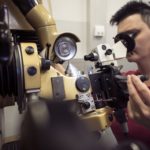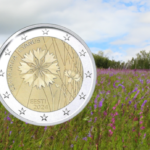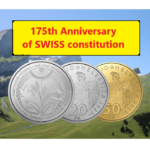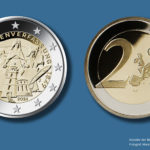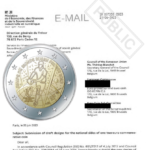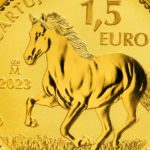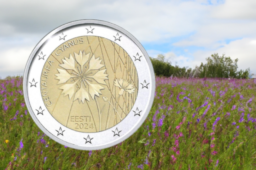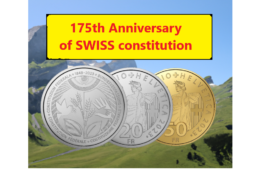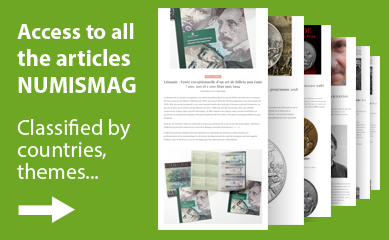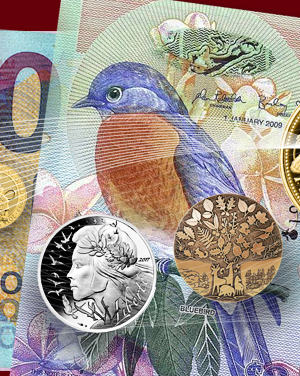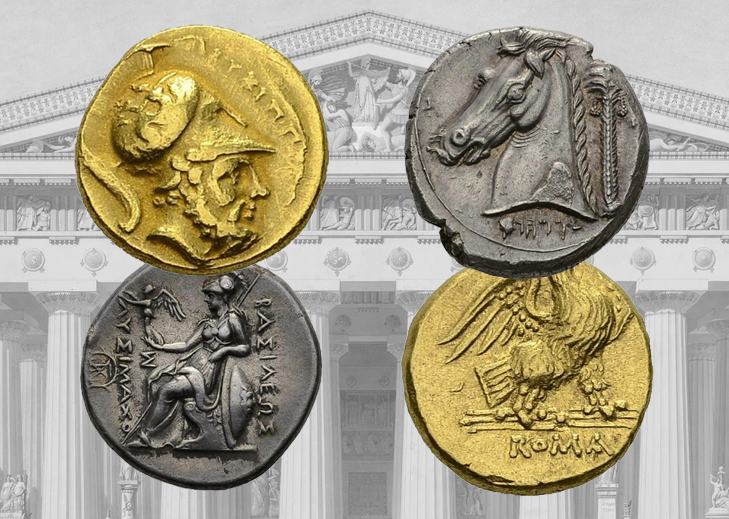
Antic Coins Auctions – Auction House Chaponnière & Firmenich SA
- May 04, 2021
- by
- Olivier

Chaponnière & Firmenich S.A. is pleased to offer for sale the collections of ancient coins of Messrs. J.M.A.L. and P.J.H.D. Long-time friends and lovers of history, they have been able, through their travels, to sharpen their knowledge of Antiquity. Thanks to rigorous research and great erudition, they have, between them, established a remarkable collection of more than 1,700 Greek, Roman republican, imperial and provincial, Celtic as well as Byzantine coins, patiently acquired between 1970 and 2000.
Both by their volume and by their diversity, these collections are of great interest. They offer the possibility of better understanding the incredible iconographic variety of ancient coinage. They give beginner or seasoned collectors the opportunity to enhance their collections with attractive starting prices. In short, they form a grouping rarely offered in a single sale.
Chaponnière & Firmenich has carefully selected coins which are presented individually or grouped into consistent lots.
You will find of note, a very rare bronze issue of Alexandria for Antinous, favorite of the Emperor Hadrian, as well as a series of bronzes of Magna Graecia and a nice selection of provincial coins of the greatest variety. For example, there are two Stratonicea medallions with the joint busts of Caracalla and Geta that show traces of a damnatio memoriae!
Leukippos and the foundation of Métaponte
Lot 31. GREECE. Lucania. Metapontion, Pyrrhos of Epeiros.
Tetrobol 280-279 BC

Obv. ΛEYKIΠΠ[OΣ]. Helmeted head of Leukippos right. Rev. [M-E] / ΣI. Two barley ears. HN Italy 1630. AU. 2.72 g. XFFrom the J. M. A. L. collection formed between 1970 and 2000.
A selection of superb quality bronzes from Magna Graecia
Lot 38. GREECE. Sicily. Akragas. Onkia 440-430 BC

HGC 2, 130; CNS 8. BR. 4.63 g. VFFrom the P. J. H. D. collection formed between 1970 and 2000.
Lot 42. GREECE. Sicily. Akragas. Phintias, 287-279 BC. Bronze.

HGC 2, 168; CNS 119. BR. 2.58 g. VFFrom the P. J. H. D. collection formed between 1970 and 2000. A particularly fine and attractive example.
Lot 50. GREECE. Sicily. Himera. Hemilitron or Hexonkion 415-409 BC.

HGC 2, 479; CNS 35. BR. 2.29 g. XFFrom the P. J. H. D. collection formed between 1970 and 2000.
Lot 55. GREECE. Sicily. Kersini. Tetras 344-339 BC.

HGC 2, -; CNS III p. 322, 2 (uncertain mercenaries) BR. 5.57 g. XFFrom the P. J. H. D. collection formed between 1970 and 2000. Extremely rare.
A masterpiece of siculo-punic engraving
Lot 47. GREECE. Sicily. Entella. Tetradrachm 320-300 BC, Punic issue.

Obv. Head of Arethusa left, corn in the hair, with pendant earring and pearl necklace, four dolphins around. Rev. ‘MMḤNT (in Punic). Head of horse left, palm tree behind. HGC 2, 284; Jenkins Punic 171 (same dies). AR. 17.17 g. Nice AUFrom the J. M. A. L. collection formed between 1970 and 2000; Ex. Credit Suisse Zürich Monetarium 31, spring 1991, lot 31.
A classic statere of Philip II of Macedonia, with a pedigree of 110 years
Lot 93. GREECE. Macedonian Kingdom. Philip II, 359-336 BC.
Stater 323-315 BC, Pella.

Obv. Laureate head of Appolo right. Rev. ΦΙΛΙΠΠΟΥ. Biga driven right, fulmen below. Le Rider 172, 410 (this coin). AU. 8.55 g. XF+ light toningFrom the J. M. A. L. collection formed between 1970 and 2000; Ex. Collection Rous, Bourgey auction, 29-31 May 1911, lot 91; Ex. Münzen und Medallien AG Basel list 575, May 1994, lot 5.
A Republican Denarius
Lot 250. ROMAN REPUBLIC. L. Mussidius Longus.
Denarius 42 BC, Rome.

RRC 494/42b. AR. 3.74 g. XFFrom the J. M. A. L. collection formed between 1970 and 2000.The reverse shows the cloacinae sacrum, in front of the basilica Aemilia, which was one of the principal sewer grates named “cloaca maxima”.
The cult of Artemis in Ephesus
Lot 279. ROMAN EMPIRE. Ionia. Claudius I, 41-54. Cistophorus 41-42, Ephesus.

RPC 2222. AR. 10.74 g. VF-XFFrom the J. M. A. L. collection formed between 1970 and 2000; Ex. Münzen und Medallien AG Basel list 500, June 1987, lot 34.Located on a very ancient place of worship in Artemis, the temple of Ephesus or Artemision was one of the Seven Wonders of the World. Its construction was financed by the famous king of Lydia, Croesus. Its dimensions were colossal, about 138 m long and 72 m wide. It was also the first banking establishment in the ancient world. The Temple in sight of its importance attracted a large number of pilgrims and donations were made by various kings and neighboring cities. Although destroyed in 356 BC by arson, started by a poor fellow named Erostratus (his ambition being to leave his name to posterity), the temple was rebuilt identically by various cities who benefited from its function as a bank in the time of Alexander the Great. The depiction of this temple on the Cistophores gives a perspective to the size and magnificence of this masterpiece of ancient architecture.
Les monnaies du damné
La damnatio memoriae « ou littéralement la damnation de la mémoire » est à l’origine un ensemble de condamnations post mortem à l’oubli, utilisée dans la Rome antique. La damnatio memoriae est votée par le Sénat romain à l’encontre d’un personnage politique. Elle consiste essentiellement à effacer la personne concernée des archives historiques. Seuls, les coupables convaincus de crime contre l’État pouvaient encourir une peine aussi sévère, même si avec le temps d’autres types d’accusations purent valoir au coupable le même genre de peines.
Lot 410. ROMAN EMPIRE. Caria. Caracalla & Geta. Medallion 197-211, Stratonicea.

Obv. Confronted busts of Caracalla right and [Geta] left, both laureate, draped, and cuirassed; countermark: helmeted laureate head of Caracalla within incuse circle. Rev. Hekate standing left, holding patera over altar and torch. SNG von Aulock -. BR. 31.60 g. F+ tooledFrom the J. M. A. L. collection formed between 1970 and 2000.The portrait of Geta has been erased as Damnatio memoriae after he was murdered in 212 by his brother, Caracalla. Countermark of bust of Carcalla.
Lot 411. ROMAN EMPIRE. Caria. Caracalla & Geta. Medallion before 209, Stratonicea.

Obv. Confronted busts of Caracalla right, laureate, draped and cuirassed, and [Geta] left, bareheaded, draped, and cuirassed; countermarks: laureate and draped bust right within incuse oval. Rev. Hekate standing left, holding patera and torch; to left, hound standing left. SNG von Aulock 2692. BR. 21.10 g. VG tooled, corrodedFrom the J. M. A. L. collection formed between 1970 and 2000.The portrait of Geta has been erased as Damnatio memoriae after he was murdered in 212 by his brother, Caracalla. Countermark of bust of Carcalla.
NUMISMAG©

